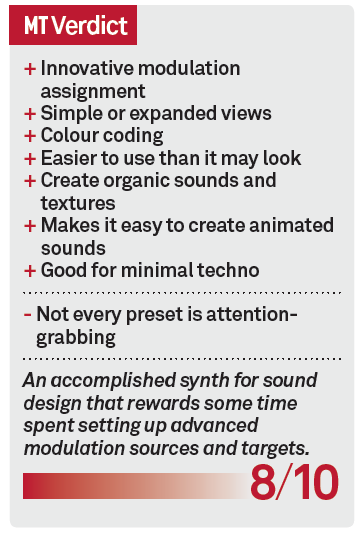Native Instruments Kontour Review
Sometimes you want your sound to really move. Hollin Jones gets hands-on with NI’s Kontour… Details Price £89 Distributor Native Instruments Contact via website Web www.native-instruments.com Minimum System Requirements OS X 10.8 or higher Windows 7 or higher 4GB RAM Amazon.co.uk Widgets If the three new synthesizers introduced alongside Komplete 10, Kontour is probably the […]
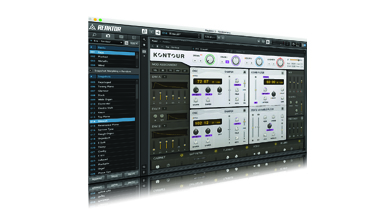
Sometimes you want your sound to really move. Hollin Jones gets hands-on with NI’s Kontour…
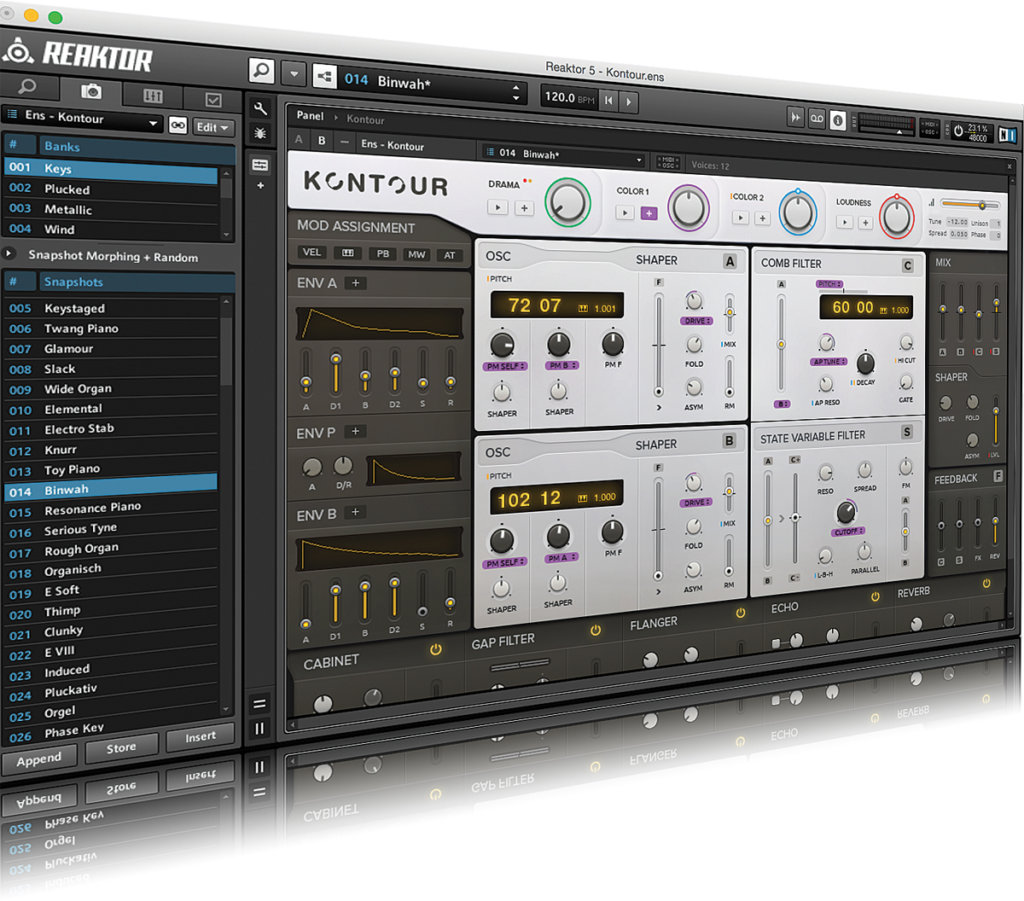
Details
Price £89
Distributor Native Instruments
Contact via website
Web www.native-instruments.com
Minimum System Requirements OS X 10.8 or higher Windows 7 or higher 4GB RAM
If the three new synthesizers introduced alongside Komplete 10, Kontour is probably the most in-depth. Not that the others (Polyplex, Rounds) aren’t – in fact they are very powerful – but where they focus on modern sounds and immediacy of results, Kontour is arguably more of an experimental tool.
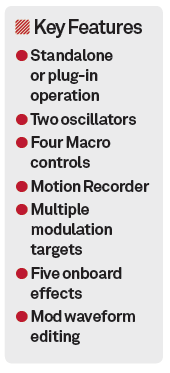 Like its siblings it runs in the latest version of Reaktor 5 or Reaktor’s free Player version and has a small file size of just 25MB. At its heart are two sine oscillators with powerful capabilities of phase modulation, extensive wave-shaping options and ring modulation.
Like its siblings it runs in the latest version of Reaktor 5 or Reaktor’s free Player version and has a small file size of just 25MB. At its heart are two sine oscillators with powerful capabilities of phase modulation, extensive wave-shaping options and ring modulation.
The focus of Kontour is modulation, and it provides you with a great many ways to modulate the sound it produces. The character of its patches could probably be best described as organic, metallic and textured. Lacking the immediacy of its EDM-focused brethren, it’s arguably an instrument to be explored and discovered rather than just a dancefloor filler.
Building Blocks
There are four central areas: oscillators A and B, a comb filter and a state variable filter. You can dial in the settings you want to create a synth sound, of course, but the interesting stuff happens when you begin to modulate parameters.
At the top of the window are four colour-coded macro controls, and if you switch to the Motion Recorder section you can get better control over their behaviour. Here is where you can load, tweak and otherwise create waveforms that are used as sources to modulate multiple parameters within the synth.
The Drama control has up to 11 targets and these will increase the ‘dramatic’ character of a sound when modulated. Colour 1 and 2 have up to 12 targets and influence the brightness or the number of higher partials.
Loudness is the fourth macro and this has up to nine targets, generally used to change the internal levels of the sound engine. By using the mouse and clicking and dragging around you can create all kinds of shapes in this section and edit them afterwards.
The Motion Designer window is a kind of ‘essentials’ view of Kontour and lets you edit the precise shapes used for modulation in great detail. If you return to the main view, however, you can make more assignments.
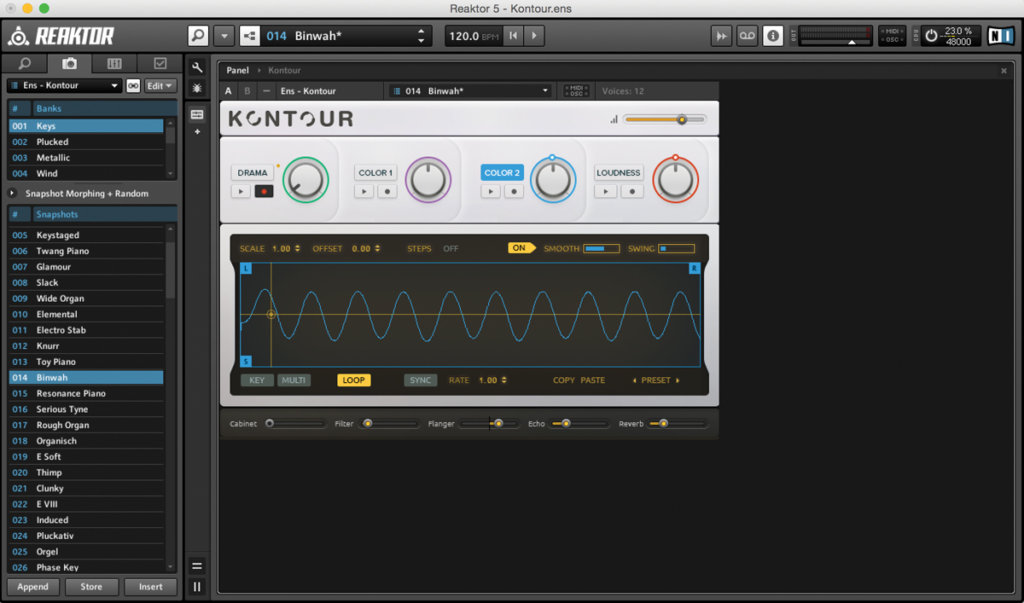
Click on any one of the macros and the target parameters are lit up using that same colour, making them easy to spot. For each one you can click and drag on it to set a modulation range. So to make a filter cutoff dial modulate between two specific values, just dial them in.
There are different modes for the modulation sources. When in Loop mode a macro will continually modulate regardless of whether a note is pressed. In Key mode, modulation only starts when a note is received. You can mix and match too, so some parameters modulate permanently and others only when activated.
In addition to these there’s an extra modulation assignment area to the left where you can set up velocity, pitch bend, mod wheel and aftertouch (among other things) to modulate various parameters, and again these change their display based on what you select, making it easy enough to follow what you’re doing.
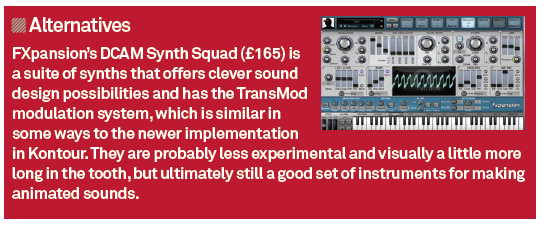
On the right-hand side is a mixer section for balancing the various signals internally, and a shaper and feedback section for further tailoring the signal. Along the bottom are five effect modules, cab, filter, flanger, echo and reverb, each with their own settings and with various parameters linked to the four macro control sections.
With a little work you can create some really interesting and organic sounds and textures in Kontour, and its modulation capabilities really are incredible. It’s probably not your go-to instrument for ready-made club bangers, but as a sound design tool it’s remarkably powerful. The system of modulation assignment is well designed and innovative, and makes it easy to understand what’s going where.
If you’re working on more abstract or experimental sound design or electronic music this could be a valuable addition. Like NI’s other new releases it’s affordable too, coming in at under £100. There’s a free demo version available to download from the company’s website so it’s well worth checking it out for yourself today.
